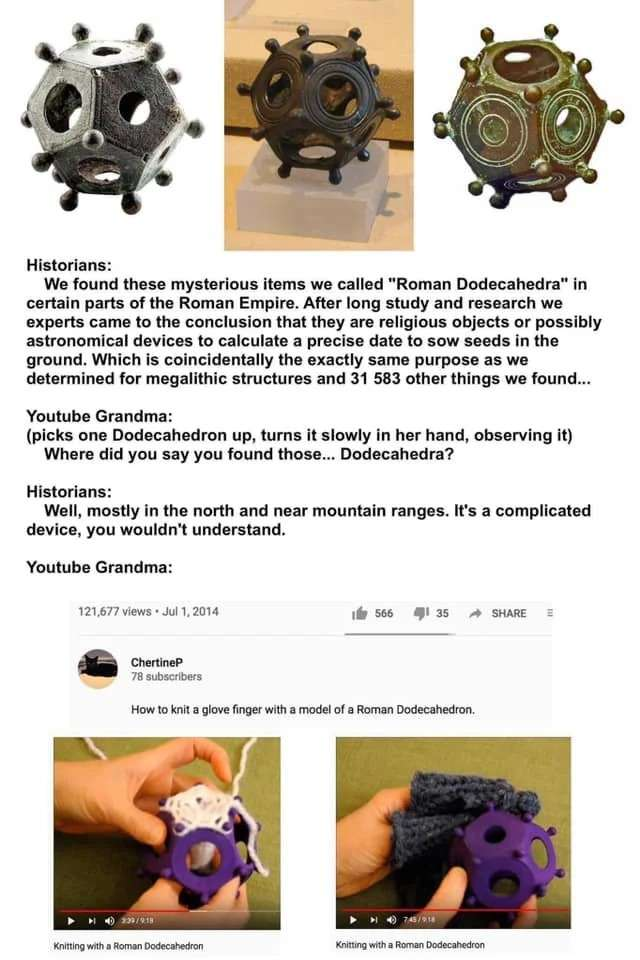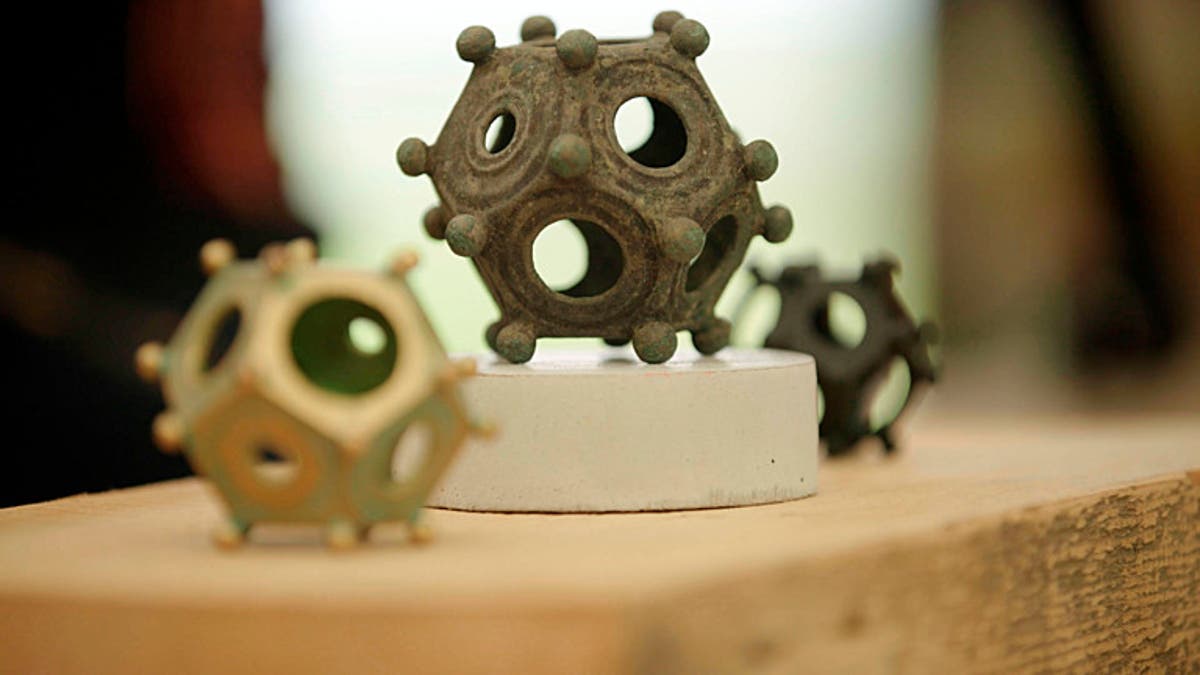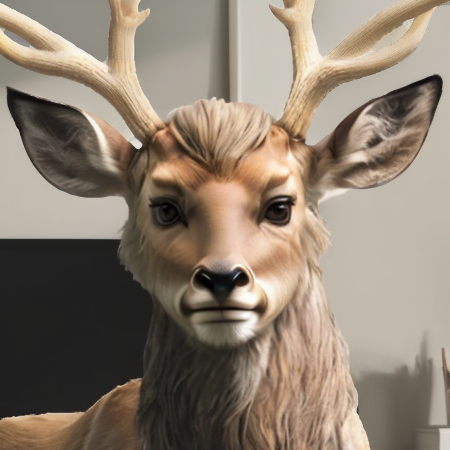A mysterious Roman object unearthed in an amateur dig has baffled experts as it goes on display in Britain for the first time.
The 12-sided object was discovered in Norton Disney, near Lincoln, in 2023, and will go on display at Lincoln Museum as part of the city’s Festival of History.
Richard Parker, secretary of the Norton Disney History and Archaeology Group, said it was a “privilege to have handled” the dodecahedron, but was still at a loss over what it was.
Oh is that why the fraudulent archaeology group I’m on started talking about this weird meme that seems to think that the Romans understood the concept of knitting and that these would be practical to manufacture for that task.

We’ve been having a good laugh about it, although it’s the typical “what do you scientists know about anything” story that way too many people believe.
Ugh I hate this kind of folk knowledge circlejerking
If it was done with prior knowledge of Roman textile making (i.e. the Romans actually did know how to knit), it would be an okay archaeological experiment, and experimental archaeology is a valid form of archaeology.
But this was not that. This was some lady who knew how to knit, saw one and said, “that could be used to knit gloves.”
And the knitters who are part of the group have chimed in and let us know that it is far less practical than a knitting frame anyway.
So this leads me to another “might be” kind of answer.
I know that monkey fist and similar other knots to help casting a line to a dock or whatever als frequently have weights in them, the nubs and holes could help keep it from getting lost.
It’s a good theory, but they are found all over the place and not necessarily close to water.
Just spitballing on my part. I’m not sure what the context of the find is. I’d assume if it for knitting it’d be found near other tools for yarn craft. (distaffs, drop spindles, or whatever they used. and the, uh, yarns.)
I’d assume if it was for tent poles, it’d be found stored near tents, Similarly, if it was for casting lines… it’d be near ropes- though rope would have needed to be tossed for a variety of tasks beyond purely naval interests.
another potential is as some sort of lampshade for a candle/oil lamp. Though that’d probably be pretty self-evident, with soot and all.
A candle holder has been one of the possibilities suggested because a couple of them were found with wax inside, but some of them don’t have any holes at all. They aren’t all uniform in size, some have holes, some don’t. Some have knobs, some don’t. The only thing they all seem to have in common is that they’re dodecahedrons.
well, that complicates things.
Are we sure they’re just not messing with us?
That’s my other guess. It was an ancient plot to confound future archaeologists.
4th century welding test
Thanks. I was about to embarrass myself 😅
Just so anyone else doesn’t- the Romans didn’t know how to knit (it originated around the 11th or 12th century in the Middle East): https://motherknitter.com/history-of-knitting/
That link mentions that finger knitting was practically prehistoric. Are we confident that there was not some rudimentary form of knitting being practiced?
There are a great many Roman fabric samples from dry areas like Egypt, along with stone carvings of people making Roman textiles and writings about Roman textile-making and none of it suggests they understood the concept of knitting.
More to the point, these objects would be less practical than a knitting frame anyway.
And it doesn’t answer all questions about the object. Why is the object polyhedral if you only use one side to do the knitting. If it’s a mundane item, why did they make it stupidly complex when a simpler shape would do. It also ignores why the wholes are different sizes when the size of the holes doesn’t affect the knitting.
Are you sure the hole size doesn’t affect the finger size? It would seem to change the stitch size. If so, having one object that could make different finger and thumb sleeves might be useful, and the shape makes it easy to hold and find.
Or maybe it’s for measuring how much spaghetti to put in the pot!
The hole isn’t used in the process of knitting with these things, just the knobs on the corners.
First thing that pops into my head is that it was used to lash poles together for tents, awnings, military banners, etc. I am no doubt wrong. But for some reason I think they would work nicely for that purpose, and make the whole kit portable and easy to set up and tear down.
That might actually have been a good guess.
I’d go with some sort of game- like jumping jacks, maybe. Or some sort of weird bocce ball.
My immediate thought was that it was just some kinda ancient fad, like fidget spinners.
Why make such a complicated ass shape when a rope or thong of leather would serve the same end?
Also, they’re commonly found stored with people’s valuables - coin stashes, jewelry, etc. They were clearly valuable. Many of them don’t appear to have any wear on them either, so if they had a utilitarian use it likely didn’t involve lashing stuff together.
My guess is just a good luck charm type of thing. The Romans had a lot of those.
Erector bobs
“The imagination races when thinking about what the Romans may have used it for. Magic, rituals or religion - we perhaps may never know.”
Yes, magic, ritual, or religion—the only conceivable purposes for anything archeologists can’t immediately identify.
And by immediately you mean hundreds of people working full time for decades trying to figure it out.
It didn’t take them decades to come up with the idea that they were for magical use, it took them decades to fail to arrive at a better consensus.
It took them decades to thoroughly and methodically rule out other explanations to make sure their initial estimation is accurate.
Archeologists are highly educated professionals that spends a lot of time and effort into research. I don’t know why you want to portray them as bumbling idiots that make shit up when they dont know.
He’s saying that archaeologists have a tendency to grandiously assign religious or ceremonial purposes to uncovered objects when they should start with mundane purposes first. This object looks like a dice. Therefore, the first potential purpose should be a dice, not a mystical device to contact the Goa’uld.
I’m not portraying archaeologists as making shit up—I’m saying people in general jump to “magic rituals” when archaeologists can’t provide a definitive answer. The person quoted was explicitly speculating, not providing a professional opinion.
I think they’re dice.
That is certainly one possibility, although I think the idea that these were some sort of worship object or fortune telling device by the Neoplatonists is the most likely answer, as the dodecahedron was an especially sacred object to them because it was to Plato.
A Midplatonist work attributed to the Timaeus of Plato’s dialogues discusses it-
According to “Timaeus” the universe has two causes: Mind, which governs rational beings, and Necessity, which governs bodies and all irrational beings. Interpreting Plato literally, “Timaeus” affirmed the temporal creation of the cosmos, and while stating that the cosmos is capable of being destroyed by the one who created it (the Demiurge), he denied that it would ever actually be destroyed, since it is divine and the Demiurge, being good and divine himself, would never destroy divinity. In what is possibly a later addition to the text, “Timaeus” assigns numerical values to the various proportions produced by the mixture of the Same and the Different (these being the two opposing forces, productive of all motion, growth, and change in the cosmos, as discussed in the Timaeus dialogue). The substratum of all generated things is matter, and their reason-principle or logos is ideal-form. “Timaeus” then proceeds with an account of the geometrical proportions of the cosmos, finally declaring that the image of the cosmos is the dodecahedron, since that is the closest approximation to the perfect sphere, which is the image of purely intellectual reality.
Neoplatonism was a pretty big deal in the Empire in the third century.
Either that, or the Romans manufactured and buried them in order to confuse people 2000 years later.
The number 12 was really significant to early Mesopotamia and continued on trhu the Roman age. Babylonians used Base12 instead of Base10, gregorian calendar has 12 months, etc
If it was religious in nature, why wouldnt there be any manual or depiction of it in any of the existing art and structures?
IMO, the answer is because it was too mundane, like a shoelace or a paper clip to us. Someone above mentioned as possibly being for tying tent poles and the like together, which is now my new favorite theory 😃
Seems pretty simple to me. Everybody loved to gamble, so they needed to be sturdy, and also big shiny metal trinkets are cool. They have different sized holes to denote the different values of the sides, and the knobbies make them bounce and roll in unexpected ways and keep them from rolling once they come to a rest.
We do have companies like Chessex that make blingy dice for the D&D and tabletop gaming crowd today, I suppose.
I’ve wondered before whether a similar, but more-rollable looking strange set of artifacts that were also found in Britain might be dice:
https://en.wikipedia.org/wiki/Carved_stone_balls
Those are far more ancient than Roman artifacts, though.
Actually, on second glance, they do appear to have “numeric” engravings at all the places that might settle facing up or toward you. Very interesting.
Those are actually for butt stuff.
No, but seriously I could see them being used in some sort of “marbles” -type game. Or, like, maybe some kinda twisted mini-croquet.
Ok I got a theory and I think it’s a good one. I would say that’s a measuring tool, like an ancient tape measure, or at least I think I could use it for that. If you chose a zero knob, roll it a certain way, and know how to read the knob it finishes at, you can measure something pretty fast, the holes tells you which knob you are at and measure the fractional part to a 1/12 of the knob distance precision. It certainly must have a bit of a learning curve though.
multifaceted cock rings
Lucky Romans. They did quite well for themselves girthwise.

There are larger girths to be found in the animal kingdom. Those Romans could get wild.
I’m curious where Swans fall on that spectrum?
Those Romans… they knew how to party.
DO NOT SOLVE THE PUZZLE
It’s obviously a strawberry planter.
deleted by creator
Obviously you’re supposed to put it in your ass
Kids toys. Someone made a killing one Xmas.
I actually wonder if this is a coin sorter to help count money of various sizes












